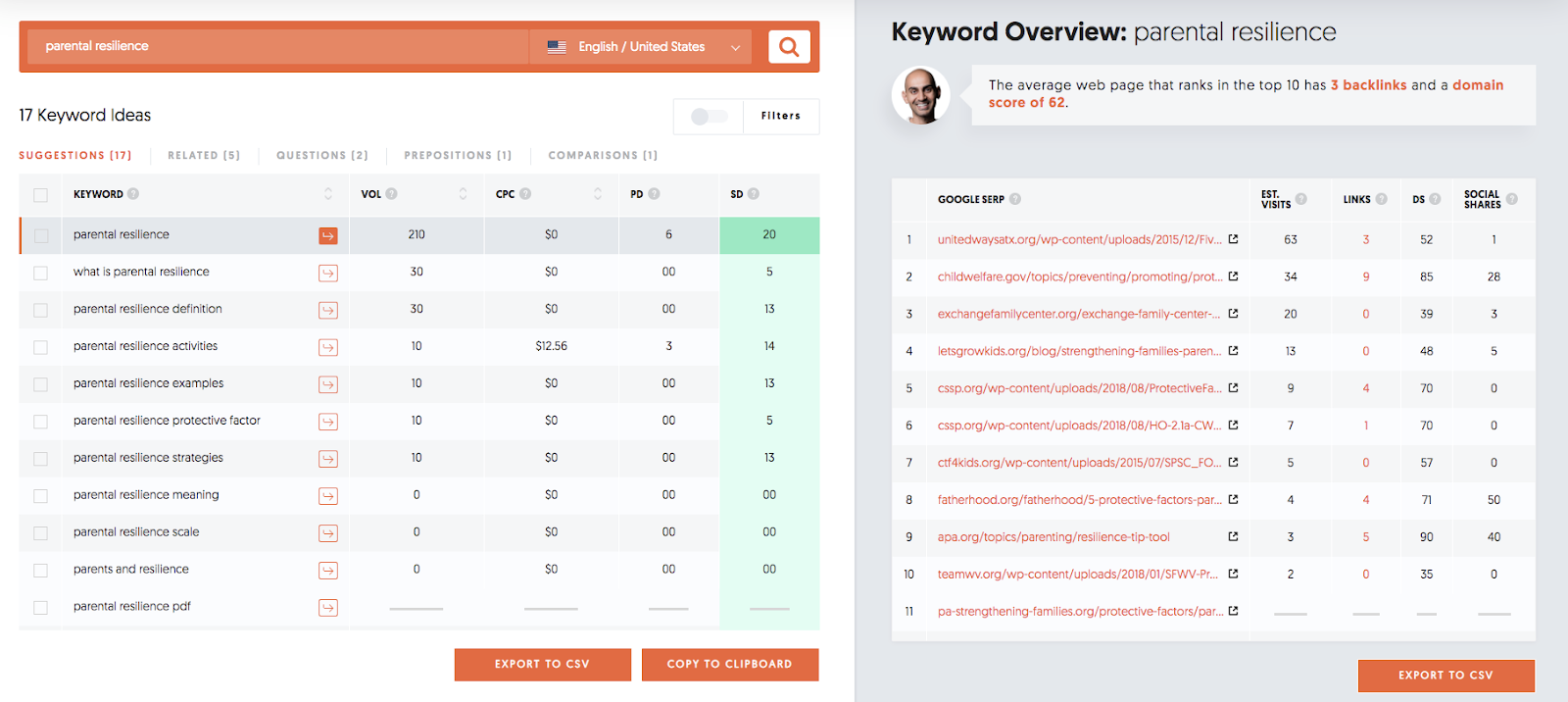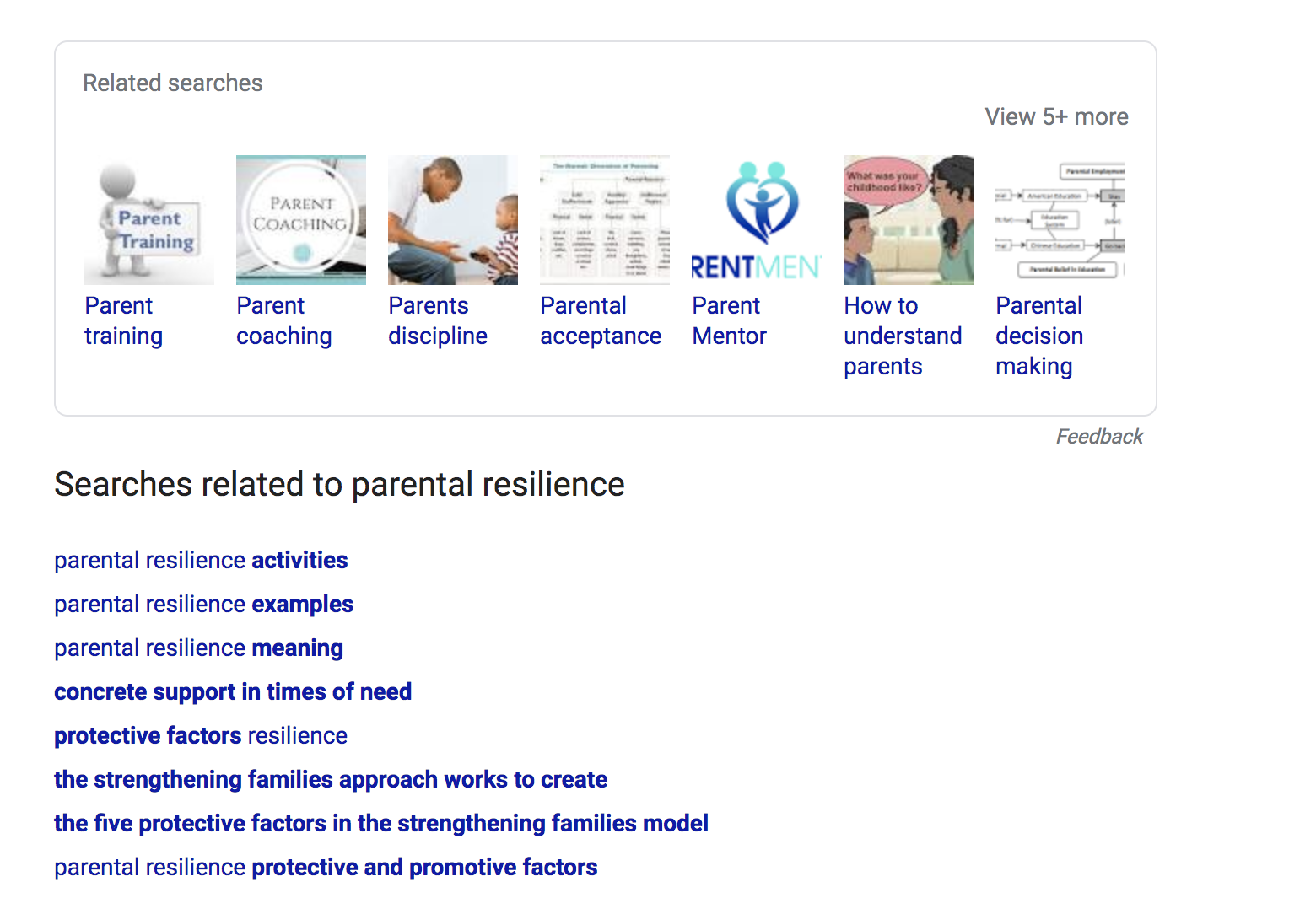As content marketing has become a standard part of marketing strategy, content creators have been inundating the internet with content.
In 2019, over 4.4 million blog posts were published every day.
How can you create high quality content in a sea of listicles, “ultimate” guides, how-to’s, infographics, whitepapers and ebooks?
In my career as a content writer and strategist, I’ve noticed that there is a spectrum of content creators.
Some think that you should just simply “write good content,” and the users will follow.

Others may think that you must use your target keyword a certain number of times in an article, and each paragraph, subheading, link, and phrasing must be 1000% optimized for SEO.
In reality, creating high quality content lies in the middle of this spectrum.
It’s important to write content for humans, not for search engines. However, it’s hard to get your content in front of humans unless you consider the search engines that largely dictate who sees what.
To solve this dilemma, I’ve created this practical guide to content writing that combines search engine research, user research and editorial best practices. It never fails me in my quest for writing content that is “high quality.”
But first — what is high quality content?
What makes content high quality is, to some degree, subjective. However, in this instance, I’m defining “high quality” content as being content that:
- Helps the reader understand something or solve a problem
- Answer the reader’s questions
- Is created for a specific audience/persona
- Makes sense and is easy to scan and read
- Contains different formats and visuals that explain the information in the best way possible
- And, if possible, contains something original, whether that be an original interview from an expert or original research
Why is high quality content important?
Everyone has a blog these days. Having content that’s simply good isn’t good enough due to rising user expectations and competition. In addition, producing low-quality content won’t provide any of the audience-building, lead-converting, social media-engaging benefits that are why you decided to start creating content in the first place.
4 steps for creating high quality content
Step 1: Content research
Before you begin content development, conducting thorough research to both select your topic and write about it is critical. The steps moving forward assume you have an idea of what you’d like to write about as well as your persona identified.
Hone in on your topic or keyword area
Even if you aren’t writing an article on a specific keyword/topic for SEO purposes, many of these tips will still apply as far as creating an article that will ultimately be well-informed and useful.
However, I would argue that it’s important to at least try to write an article that focuses on a keyword with a decent search volume. This goes back to the point I made in the introduction — if you don’t consider SEO in your content ideation, how will you know if you are creating content people will find organically? While there are plenty of other ways for people to find your content (via email, social media, etc.), incorporating search engine research in the beginning will help you in the long run.
So, to identify your topic, if you aren’t using a paid SEO tool, you can use UberSuggest (or a variety of other tools) for content research.
For example, let’s say we are developing content for a child-focused nonprofit, and our blog post is going to be about parental resilience. I can input “parental resilience” into UberSuggest and see general information on the topic:

Next, I can also scroll down and see keyword ideas. These may be things we want to make sure we address in our article as subheads, such as “what is parental resilience” and “parental resilience examples,” or they could be separate articles we want to create that will link to this article depending on the search volume and how different the topics are. In this example, most of the keyword ideas below “parental resilience” have a low volume and are highly related to “parental resilience,” so they should be incorporated into the article I’m writing.
Look at top-ranking articles
Whether you type your keyword or topic into Google or check out the top-ranking articles in UberSuggest, you should click through every article on the first page (at least) to see if there are any commonalities or features that stand out. For example:
- What kinds of sites are ranking for this content?
- Are the top-ranking sites similar to your site?
- Are the articles formatted as listicles?
- Do they contain graphics or videos?
- Do they all address the same common topics and questions?
Note: If the top-ranking sites are very different from your site (for example, they are all medical sites and your website is not), it may be more difficult for you to rank for this keyword.
In UberSuggest, we can click on one of the keywords to show the keyword overview, including the top-ranking articles for the keyword.
I can expand these and click through the top-ranking content to get this information.
For example, for parental resilience, I can make the following observations from these top-ranking pages that can inform how I develop my content:
- Many are PDFs with fact sheets and tips, so providing something like that to my readers might be helpful.
- Many discuss parental resilience in relation to the other protective factors, so I should include that in my article and consider creating a pillar page that’s on the protective factors and links to this article.
- The content comes from nonprofit organizations, so it is a good fit for my site as a nonprofit organization.
- Tips for developing and building resilience is also commonly discussed in the content.
- Graphics and charts are sometimes featured in the content, along with bulleted lists and numbered tips
Examine user research
After reviewing the content in our top-ranking articles, you should look at the questions people are asking in Google and the related searches.
If I open an incognito window in Google Chrome and enter “parental resilience,” this is what I initially see in the “people also ask” section:
I can expand these questions to see even more questions. This information can help us outline our content and even map out the subheads in our article.
The bottom of the page that includes related searches also helps us discover what we should either include in this blog post or what we can provide in future blog posts as part of this topic.
 Step 2: Content writing
Step 2: Content writing
Now that we have done all of this research, we’re ready to write our article in a way that’s informed by SEO but ultimately guided by what the user wants.
Outline your article
With all of the above information, the article outline is usually pretty straightforward, since we can incorporate the “people also ask” questions, elements from other top-ranking articles (such as bulleted lists), related keywords, and related searches.
For example, if I were writing the article on parental resilience, my outline might look something like this:
Introduction: scenario illustrating importance of parental resilience
H2: What is Parental Resilience?
- Definition of parental resilience
- How it is one of the Five Protective Factors in the Strengthening Families Approach
- Why it’s important
H2: How to Build Parental Resilience
- Tips on how to build parental resilience as a bulleted list
- Parental resilience examples
H2: Parental Resilience Activities
- Link to PDF worksheet of parental resilience activities
Write the article and create any other content
While you’re writing, keep in mind your target audience and try to make it as inviting and easy as possible for them to make it through your content. This means using subheads (H2s and H3s) along the way as well as bullet points when possible.
Remember your “why” for writing the article and the audience’s “What’s In It For Me (WIIFM).” We did all of this user research to make sure our article provides the information that the user needs!
In addition to writing the article content, now is the time to create any other content that will amplify the post, such as:
Infographics & social graphics
Now is the time to create infographics to embed into your article as well as graphics that can be shared on social media for down the line.
Downloadable resources
In this example of parental resilience, a downloadable PDF could be a great resource for parents, so I would consider doing this in addition to writing the article. For in-depth topics, providing a way to download resources is a great way to capture marketing qualified leads and give more information.
Expert interviews
Whenever possible, interviewing an expert to provide an authoritative stance to your article brings a depth and nuance that goes beyond the internet research I’ve described. For an article on parental resilience, interviewing a psychologist, social worker or other expert would bring the article to another level of thought leadership.
As you’re writing, you may ask yourself — how long should my article be?
This completely depends on what you are writing about. For this example, as we’re writing an in-depth, educational piece for SEO, I would recommend 1500+ words. However, ideal word length depends on the purpose.
Step 3: Content publishing
Now it’s time to publish! While these publishing tips are helpful, they scratch the surface of how to optimize your content in this phase.
Optimize on-page elements
When you go to publish, it’s important to keep the following on-page elements in mind:
- URL: make sure the URL is short and SEO-friendly; for example, /what-is-parental-resilience could be the slug for our blog post.
- Meta-title: Research shows that meta-titles with a question mark get more clicks. So, in this example, we would make our meta-title “What is Parental Resilience?”
- Meta-data: Meta-data should make users want to click on your article for more information and also contain the keywords and topics you are writing about. For this example, we could do something like: “See the definition of parental resilience and get tips on building your parental resilience.”
- Image title and alt text: After selecting your header image, you can save the file name as the topic you are writing about, such as “Parental Resilience.” The alt-text for the image should literally describe exactly what the image is due to ADA compliance.
External and internal linking
Linking is another important part of publishing your content correctly. Here are some tips:
- External links: It’s important to link to relevant, reputable external sources; however, avoid linking externally with the text you want the post you’re currently working on to rank for (e.g., “parental resilience,” “what is parental resilience,” “parental resilience examples”). Also, these links should be set to open in a new tab.
- Internal links: It’s important to build internal links, but avoid linking internally with the text you want the post you’re currently working on to rank for (again, “parental resilience,” “what is parental resilience,” “parental resilience examples”). These links should be set to open in the same tab.
- Find related posts: Use your website’s search feature to find related posts you can internally link to. Or, if you don’t have that function, you can use Google’s Advanced Search option to find related posts to link to internally.
Add a call-to-action
If you don’t already have one in the article, now is the time to add a clear CTA that matches the goal of the post. For example, if you want someone to sign up for a parenting class after reading the post on parental resilience, the CTA should link them to the sign-up page. Having a goal and a clear place for every content piece you publish is a part of creating a successful content strategy.
Step 4: Content sharing
Sharing, or “sub-publishing,” your content is just as important of a step as the prior three. After all, we put so much work into the content — we want to make the most of it!
Create shareable assets
If you already didn’t create assets for sharing your content, do this now. Click-to-tweet text and graphics are great ways to make your content more shareable.
Update relevant posts
If you are linking internally to existing posts or have otherwise related content, make sure you update it all to reflect the new article and link accordingly.
Create social media and other sharing snippets
Writing social media posts upfront, and providing several versions and options, is a great way to save time later when building out your social calendar. Tailor your posts to each platform and do hashtag research to see if there is anything you should be including. This is also a good time to craft snippet language for your newsletter and any other platforms where you share your content.
Creating high quality content — easier said than done
This step-by-step guide is really a starting off point for creating great content. If you are creating specific content for your target audience that answers their potential questions and helps them on their buyer’s journey, you’re heading in the right direction.





 Step 2: Content writing
Step 2: Content writing